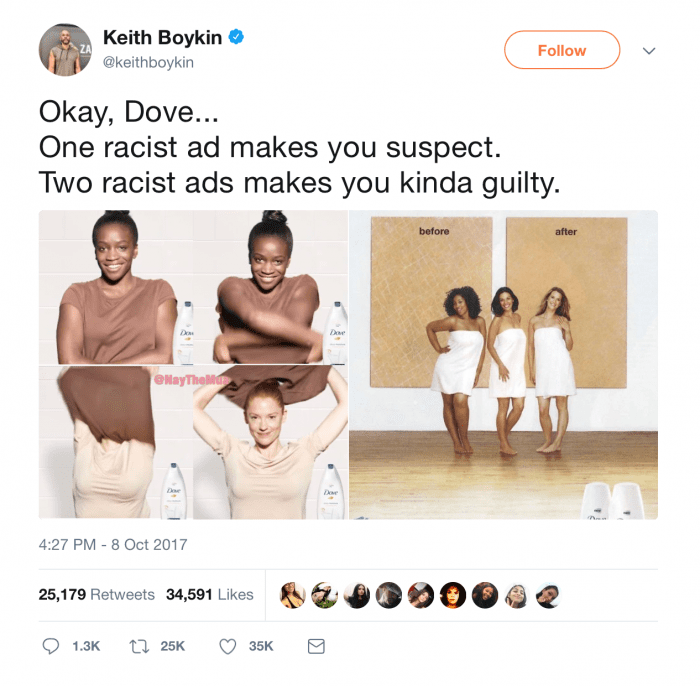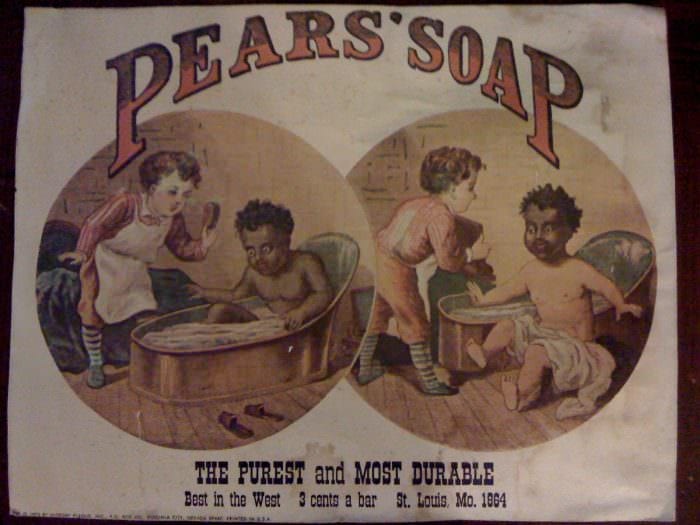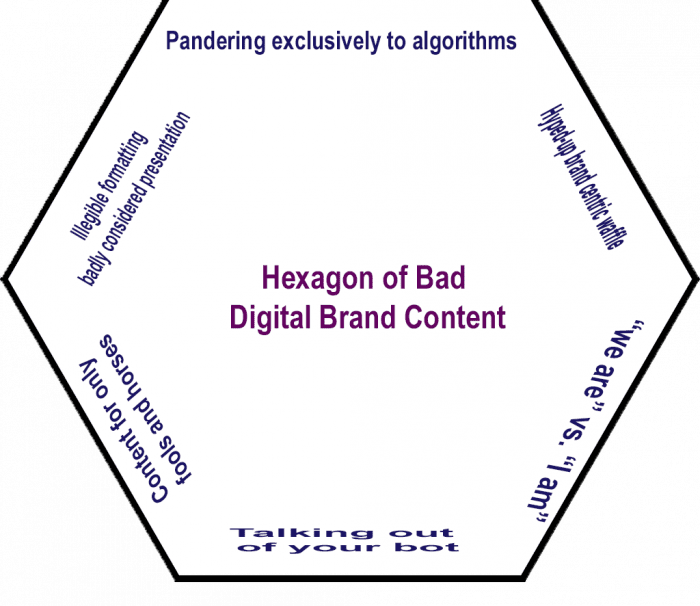Digital branding visuals to help measure and deliver purpose
What’s the point of it all? Since the dawn of humankind, people have agonized over that highly emotive question. As we steadily slip and slide towards the second decade of the 21st Century, more than ever that question is pivotal.
In the sandstorm of why…how…what… when…who… and where… Rather than instinctively turning to people for answers, we increasingly gaze through windows on wrists, laps, and desks for digital to deliver neatly packaged solutions wrapped up in brand messages with emotional ribbons and bows.
Consider Turkish owned McVitie’s (United Biscuits) which combined digital (via social media) and emotions to help sell biscuits.
Emotional marketing is nothing new. However given today’s consumers wariness of algorithms, many marketers bank on emotions to help soften qualms. Such fears could be credited to many factors including the veracity of social messages (Think Russia/Trump and Twitter/Facebook)… Or people fretting over the future of algorithms in terms of job security, and even loss of personal private identity.
So campaigns are increasingly underscored with emotive storytelling. When managed well, results can be compelling and award-winning. However, in our ‘information age’ most consumers, both B2B and B2C, are facing information overload; especially excessive emotive information. This creates more than just a gnawing danger of having too much of a good thing: Ardent tears of joy, intimacy and so on, cross-stitched into every digital campaign’s tapestry can come across like bland brand wallpaper.
Emotions come in two temperatures: hot or cold
From an economics point of view, cold emotions occur when despite constantly being subjected to emotional propositions, a person retains a sense of self-control over making a purchase. In fact, increasingly constant overexposure to highly charged emotive messages can actually lead them to feeling immune to the messages (Something I learned many years ago when I worked with international charities).
Once every digital branding campaign falls into the trap of simply delivering variations of emotional string-playing, without due care, the net results may feel soapy, as well as soppy (not that soppy or cute are bad… whereas soap suds are something altogether different).
Hot emotions occur when impulse and passion take over. So, in the case of marketing and sales, that equates to a purchase. Traditionally marketers ‘prime’ consumers with brand messages - leading to such buying climaxes.
Purposeful digital brands
A close cousin of emotional marketing is Purpose-Driven Marketing. It is designed to turn moments into movements. Brands bond with audiences through shared needs and interests - especially worthy causes. To an extent, the strategy provides today’s already cynical audience with a higher sense of unified reason.
Will it work? Well, it’s a matter of give and take. The BBC is masterful at Purpose-Driven Marketing; promising to create quality content primarily for non-commercial purposes (of course, that conveniently overlooks divisions like BBC Enterprises). More crudely, brands may partner with charities. However, unless campaigns are enhanced with hands-on initiatives (for example, offering actual people to help with local community projects) such partnerships could appear as just ‘paid endorsements’ or the early ‘Noughties’ equivalent of financial brands playing at Corporate Social Responsibility.
Content in context
Another thorny area surrounding the branches of digital brand authenticity is content in context. Take Unilever’s Dove brand. Despite years of empathetically bonding with females, recently Dove overlooked the subtleties of how, thanks to their addiction to digital, consumers currently process content. Additionally, the brand did not fully grasp the churlishness of ‘hot emotion’ consumers angered and frustrated by modern life’s general uncertainty; releasing and ‘displacing’ frustrations via social media.
Social media erupted over a looped three-second clip for Dove body wash which showed a black lady removing her top to reveal a white lady, who then removed her own top to reveal an Asian lady (perhaps suggesting Asians are more preferable than Caucasians). However, the latter part of the clip was dismissed and edited away by commentators - leaving the impression that the brand was vehemently pro-white and anti-black.
- Not appreciating how today’s consumers balance content in context
- Being naive about how social driven agendas can easily hijack digital content
Apologising on Twitter, Dove said that the post “missed the mark in representing women of colour thoughtfully”.
Still, some social media users demanded a total boycott of Dove products. Posts such as #BoycottDove, appeared in multiple European languages.
"In short, racism is back in fashion and brands are looking to benefit.” - wrote user @Beatrix B. in French.
In defense of Dove’s critics - it wasn’t the first time the brand waded into contentious waters. But look back far enough and clearly, global soap brands have a well-established track record of being notoriously racist:
Reportedly, Dove explained it was:
"re-evaluating [their] internal processes for creating and approving content”.
More is more
Just as emotive campaigns became ‘best practice’, once ‘content’ became the big issue in every campaign, too many marketing - and in particular, sales professionals - dived head-first into splashing out on more and more content - sometimes irrespective of the content’s quality, timeliness or relevance.
Quantity rather brand quality dominated. The result was what I call the Hexagon of Bad Digital Brand Content:
First side - Dullness from pandering exclusively to algorithms
Rather than aiming at human readers, too many marketers over-emphasize content designed for purely search algorithms. Of course, SEO is essential, but whilst content may rank highly on Google, it does not necessarily follow that it will also leave the right impression in consumers’ actual minds. (See ‘Fourth Side’)
Second side - Hyped-up brand-centric waffle
Sorry to be the one to break this to you fellow ‘Marketing Justice League’ colleagues, but beyond the office kitchen area, most people are more interested in themselves than your brand. So whilst ensuring that content enhances your business direction (which helps give it a distinctive point of view) also ensure the substance of that content puts them first.
Third side - “We are” vs. “I am”
Now your digital brand content addresses humans, consider whom of the 7bn people on our little planet you are addressing? Further refine content to tend to real needs, concerns, dreams, values and so on - supported by meaningful benefits.
Fourth side - Talking out of your bot
As previously stressed, SEO is critical, but when content is designed to exclusive indulge bots - engines like Google see through the incredulity.
Since even Google - let alone people - can quickly distinguish useful, trusted and worthy content from inauthentic content - you might as well make your views authentic and human!
Fifth side - Content meant for only fools and horses
Your digital brand needs to increase awareness, build trust and of course, sell. But that does not mean it should be just an advert. To help ensure credibility simply check it passes the following criteria…
Is your content:
- Engaging?
- Worth sharing?
- Worth people taking the time to link towards?
Sixth side - Illegible formatting - badly considered presentation
Once your brand content is ‘spot-on’ in terms of substance, make sure it’s actually legible in terms of formatting. Neither skimmers nor scanners will thank you for endless rambling paragraphs. Think in terms of short sentences, subheadings and so on.
Keeping with understanding how people skim and scan, as mentioned with the Dove brand fiasco, the ‘sixth side’ also takes into consideration just how easily something can be viewed-purposely or otherwise - out of context.
Meaning and purpose … whats and whys … In the end, everything is about connecting with people.
I hope that like you, your digital brand - continues to deliver meaning, purpose, authenticity, and value.
from Blog – Smart Insights http://www.smartinsights.com/online-brand-strategy/brand-development/measuring-delivering-digital-brand-purpose-meaning/
via Tumblr http://euro3plast-fr.tumblr.com/post/167008548779



No comments:
Post a Comment